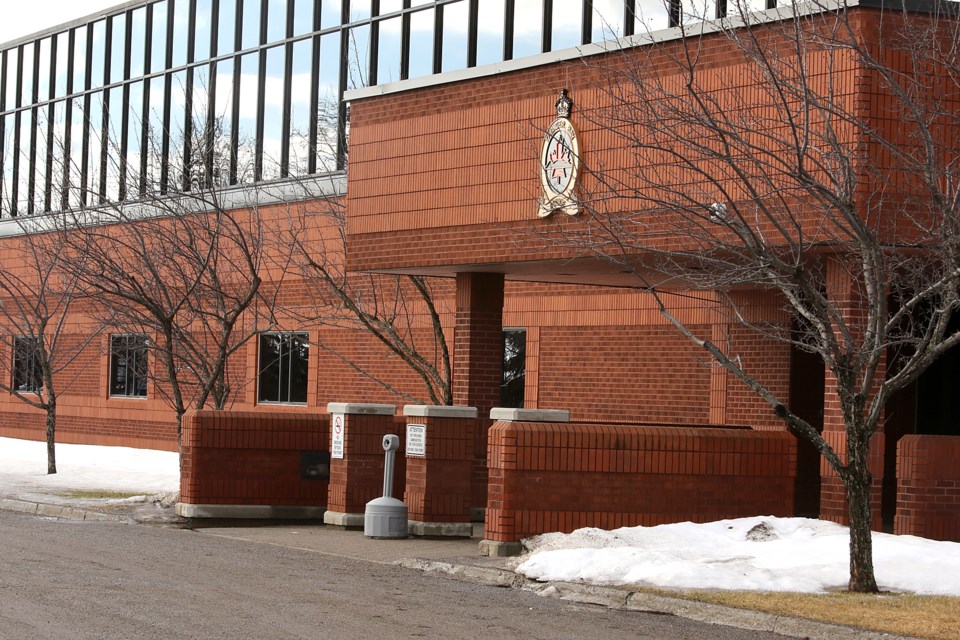THUNDER BAY – Thunder Bay city councillors continue to question the wisdom of building a new police station at an estimated cost of over $50 million.
Consultants retained by the Thunder Bay Police Services Board renewed their recommendation to replace the force’s current Balmoral Street headquarters with a much larger facility at a new location while presenting to city council Monday.
The recommendation comes with an estimated price tag of around $52 million. That estimate is inclusive of the estimated $3.5 million in revenue the city could recoup by selling the parcel of land on Balmoral.
Consultant John Stephenson with Form Studio Architects reiterated the necessity of that investment Monday, telling councillors the current station was nearing end of life and far too small for the force's current and future needs.
Alternatives to the new building, including renovating the existing station, supplementing it with smaller, satellite offices, or putting off the new build were all found to be even more costly for the city in the long run.
Several city councillors struggled to accept that conclusion when consultants behind the report presented updated recommendations Monday, however.
Coun. Aldo Ruberto continued to press his belief that the police service should have a greater presence in the city’s downtown cores, saying it would be sure to reduce crime.
“The fact that it’s on Balmoral, in the middle of nowhere, is great for the building – you’ve got a lot of land, nice roads to get into it,” he said. “But it has no impact in terms of the area – there’s no crime in that area, pretty well.”
Councillors’ desire to see the possibility of satellite offices in the downtown cores examined more seriously resulted in consultants returning Monday with an updated report, after initially considering only a new station or a renovation at Balmoral, estimated to cost $64 million.
However, Stephenson told councillors there was little evidence that locating police stations in downtown areas had any significant effect on crime.
Moreover, his team found locating police services in the south core would increase costs and come with challenges, including a shortage of suitable locations and the proximity of rail lines that could obstruct responders.
Coun. Mark Bentz shared some of Ruberto’s skepticism on the report’s conclusions.
“I’m hearing from councillors and from others that there may be some viability to having satellite stations, not just for better policing or the perception of [safety], but maybe to help reduce costs,” he said.
“I know you’ve put the numbers together. Oftentimes we see numbers that the brand new facility is the cheapest way to go, and that hasn’t always panned out.”
Over a 25-year period, the consultants’ report found alternatives including satellite offices would be at least $26,000,000 more expensive than their recommended option of building a larger headquarters at a new site.
Alternatives considered included construction of a new facility with the addition of a south core satellite; expansion and renovation of the Balmoral Street station, with satellites in the south or both downtown cores; and a new station in the south core, with a training facility in the north core.
The conclusion that the TBPS requires a 12,220 square metre building, around double the current station’s size, rests partly on projections that the force will grow significantly, despite relatively flat population growth projections for the city.
It estimates the number of full-time equivalent employees operating out of police headquarters could grow from its current 309 to 400 in the next 20 to 25 years.
Bentz questioned the sustainability of that kind of increase, suggesting the city should consider investing in other strategies to address crime that might prove more cost-effective in the long run.
“I am concerned about the sustainability of the tax payer to fund these ever-increasing service demands,” he said. “We may have to start looking at other solutions, and hopefully they’ll involve root causes... A $50 million expenditure for the city is significant – we would have to debenture all of that, and there’d be a significant tax increase.”
The new recommendation will be considered by the Thunder Bay Police Services Board, which oversees the service, in December, said Mayor Bill Mauro. A formal recommendation from the board is expected to come back to city council not long afterward.
Two councillors, Shelby Ch’ng and Cody Fraser, questioned whether the city was obliged to fund the new station.
“When $50 million comes to the table in 2022 or 2023, can we just say no?” asked Fraser, while noting he had not necessarily taken a position on the expenditure.
“The past few budgets, what I’ve learned is, when the police service comes to us with their budget, essentially, it’s the budget. We have no leeway or pull at all – the chief presents the budget, we accept the budget.”
Under Ontario law, a police services board can appeal to the Ontario Civilian Police Commission (OCPC) if it believes a municipality is not providing sufficient operational funding.
Mayor Bill Mauro suggested municipalities might have more leeway in approving or denying capital requests such as for a new building, however.
Regardless of whether police operations wound up headquartered in the south core, on Balmoral Street, or elsewhere, police chief Sylvie Hauth argued there were other steps the force was already taking to increase police presence in high-crime neighbourhoods, with a renewed focus on working with social service agencies and building relationships with residents and business owners.
“It’s definitely something we’re already working on,” she said. “We have made some specific changes in our service delivery model – moving from our beat officers to what we call our core community-oriented response.”
